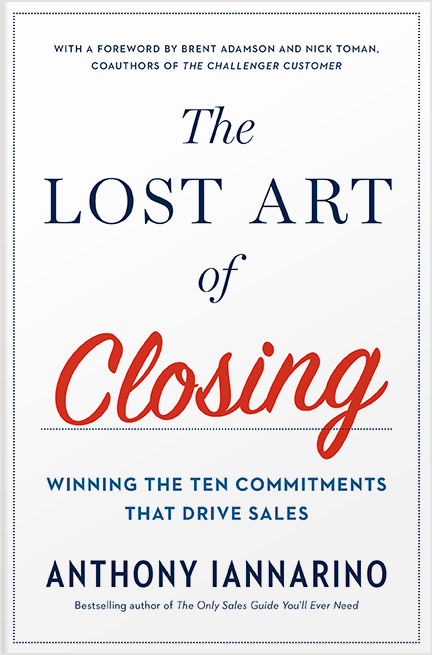There are many things you need to do well to succeed in sales. Much like leadership, the characteristics are many and varied. There are also variables, some within your control, and many outside of it. It rarely makes sense to worry about things outside your control when there are so many more that are within it. The following is a list of powerfully influential variables to your success in sales. While it is not an exhaustive list, it’s enough to get you heading in the right direction.
How Much Time You Spend Prospecting
When you work in sales, you have more freedom than most other roles in business. However, that autonomy also requires self-discipline, without which, all is lost. You mostly determine what you do and when you do it. So, if you don’t want to prospect, you won’t. No one will likely notice. Of course, that doesn’t mean shouldn’t be prospecting.
How much time and effort you put into prospecting is a variable that is within your control. Selling is made up of two parts, opportunity creation, and opportunity capture. There is a necessary order here that is required. Namely, you have to create opportunities before you capture them. Said another way, opening is the new closing.
If you are going to displace your competition, you are going to start with a meeting.
There are plenty of metrics you can look at to assess your performance. Most of them depend on creating an opportunity. That comes before win rates, deal size, and velocity (with a nod to Dave Brock).
How Much Time You Spend Selling
The fact that one is at work is not sufficient evidence to suggest that one is actually working. A sales title is no indication that one spends their time selling. It might mean they spend much time doing things that don’t result in sales, like looking at their inbox or the countless other distractions that kill performance (imagine, say, Tom Brady in the huddle, looking at his smartphone in the middle of the game).
An increase in the time you spend selling, all else being equal, will improve your sales performance. In addition to spending more time prospecting, you can spend more time with your clients or dream clients. You can spend time with more stakeholders within those clients, creating new opportunities, or building consensus around the deals you are working on now.
There are many responsibilities you have to your clients and your company, like updating your CRM and attending meetings. If you want to improve your performance, you’ll spend more time selling.
How Prepared You Are for Sales Meeting
Your client’s time is a gift. It is the only finite, non-renewable resource any of us has, and their willingness to share their time with you is a big deal. Well, you should believe it is a big deal. If you are grateful for their time, you prepare.
I was once on a sales call with a salesperson with enough experience that he should not have asked the following question: “Can you tell me a little about what your company does?” It was a short visit. Whether the research you do turns out to be relevant or useful in a sales meeting is anyone’s guess (I once cited three initiatives from the Chairman’s Letter from their annual report, only to be told, “No one here cares about that. I need help with this.”)
If you haven’t researched their vertical to understand what their challenges and opportunities might be, you are unprepared. If you don’t know what factors might be impacting their business now or in the not-too-distant future, you aren’t going to be as effective as you might otherwise be. (In which case, pick up Eat Their Lunch)Win customers away from your competition. Check out Eat Their Lunch If you don’t have a reasonably stable theory as to why they should do something different, you are not going to give them your best performance.
If you don’t have a reasonably stable theory as to why they should do something different, you are not going to give them your best performance.
How You Manage the Sales Conversation
We spend too much time talking about follow up in sales. The words “follow up” can mean calling a prospective client again after calling, leaving a message, and sending an email. More often, it seems to indicate the salesperson left a sales meeting without a defined next step on their calendar—or their prospective clients. When you ask the salesperson about their meeting, they will tell you they were successful. Why, then, is follow up necessary?
There is every reason on Earth to do your best to control the process. You sell a meeting, then you sell the process, and then you sell your solution. It isn’t easy to acquire a meeting. It is even more challenging to sell the process. How you manage the sales conversation (my way of combining your sales process with the wholly nonlinear buying process you find most often in sales), is a variable to your success.
Because this is a learned skill and a set of behaviors, it is within your control. You can learn to better serve your dream clients by helping them make and keep the commitments necessary to the future results they need. (Check out The Lost Art of Closing for more here) No more pushy sales tactics. The Lost Art of Closing shows you how to proactively lead your customer and close your sales. 
How Valuable You Are to Your Prospective Client
You do not get to determine how valuable you are to your prospective client. They do. You do, however, get to decide what kind of experience you provide them.
Two salespeople. Salesperson One walks in, pops open their laptop, and opens the PowerPoint deck their marketing department created for them. They spend the first twenty-minutes sharing their company’s history (with pictures of their offices, a timeline view of their history, and a global map showing all 4,200 of their locations). When they finish, they begin sharing their solutions.
Salesperson Two walks in, sans laptop. They begin by asking their prospective clients about their view of the strategic challenges they’re likely facing based on their research and their theory. As part of the conversation, they share the trends they’re following, the implications of certain decisions, and some ideas about what other companies are doing to produce better results.
The first salesperson is the type who loves RFPs and the one-hour meeting they are guaranteed, even though they win less than twelve percent of their deals. They also love leads. The second salesperson loves targeted, strategic clients, the kind with big problems and significant needs. The second salesperson’s win rate is something closer to fifty percent.
Call it “approach,” or “sales bedside manner,” or “salesmanship.” Whatever you call it, the variable of how valuable your client found your meeting is within your control, and improving it will improve your sales performance.
In Your Control
Work on what is in your control. Master your craft — master yourself, and especially your work ethic. Then, raise your standards high enough that no one would dare suggest you do more.








.jpg?width=768&height=994&name=salescall-planner-ebook-v3-1-cover%20(1).jpg)


